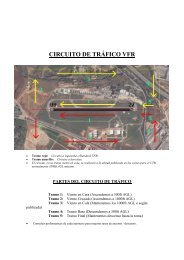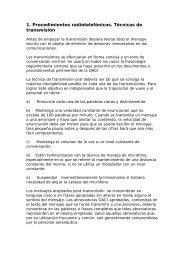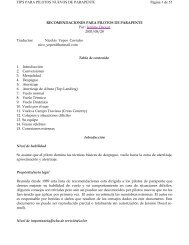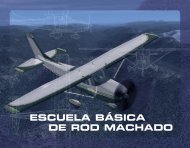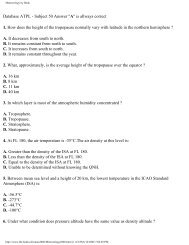ABOUT WINGLETS - Ultraligero.Net
ABOUT WINGLETS - Ultraligero.Net
ABOUT WINGLETS - Ultraligero.Net
You also want an ePaper? Increase the reach of your titles
YUMPU automatically turns print PDFs into web optimized ePapers that Google loves.
Conclusions<br />
Although performance gains achieved with winglets are only a few percent at moderate<br />
thermal strengths, such small differences can be important in determining the outcome of<br />
many cross-country flights and contests. For example, in the 1999 U.S. Open Class<br />
Nationals, just 68 points separated the first six places. This difference amounted to less<br />
than 1.5% -- far less than the performance advantage that can be achieved using welldesigned<br />
winglets.<br />
Since their shaky introduction many years ago, the acceptance of winglets is now<br />
widespread. At the World Championships in Uvalde, Texas in 1991, of 105 competing<br />
gliders, 19 used winglets. At the most recent championships in South Africa, essentially<br />
every glider entered had winglets or some type of tip treatment.<br />
Thus, after more than a decade of winglets being applied to sailplanes, it is clear that the<br />
benefits are far-reaching. If properly designed such that the profile drag penalty is of<br />
little consequence over the range of airspeeds at which the glider is flown, then there<br />
seems to be no reason whatsoever not to take advantage of the performance and handling<br />
qualities benefits that winglets offer.<br />
Finally, although some of the spinning characteristics of gliders with winglets have been<br />
explored, testing has not been extensive. The anecdotal evidence indicates that gliders<br />
with winglets are more reluctant to spin, but once they do, the altitude required for<br />
recovery is somewhat greater. Given that many glider fatalities are a consequence of<br />
stall/spin accidents during approach, at altitudes from which safe recovery is not possible,<br />
a question worth pondering is whether even the most basic training gliders might benefit<br />
from the installation of winglets.<br />
------------------------------------------------------------------------------------------------------------<br />
References<br />
1Thomas,<br />
F., Fundamentals of Sailplane Design, Translated by Judah Milgram, College Park<br />
Press, MD, 1999.<br />
2<br />
Falk, T.J. and Matteson, F. H., “Sailplane Aerodynamics,” American Soaring Handbook,<br />
Soaring Society of America, 1971.<br />
3<br />
Whitcomb, R.T., “A Design Approach and Selected Wind-Tunnel Result at High Subsonic<br />
Speed for Wing-Tip Mounted Winglets,” NASA TN D-8260, July 1976.<br />
4<br />
Masak, P.C., �Design of Winglets for Sailplanes,� Soaring, June 1993, pp. 21-27.<br />
5<br />
Mortara, K.W. and Maughmer, M.D., “A Method for the Prediction of Induced Drag for Planar<br />
and Non-Planar Wings,” AIAA Paper 93-3420, Aug. 1993.<br />
6<br />
Munk, M.M., “Minimum Induced Drag of Aerofoils,” NACA Technical Report No. 121, 1921.<br />
7 Maughmer, M.D. and Kunz, P.J., �Sailplane Winglet Design,� Technical Soaring, Vol.<br />
XXll, No. 4, Oct. 1998, pp. 116-123.



